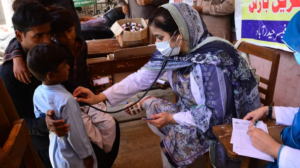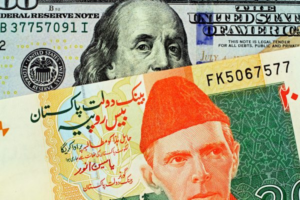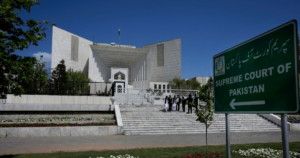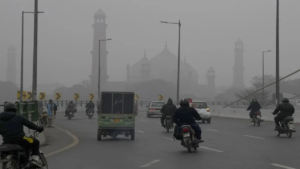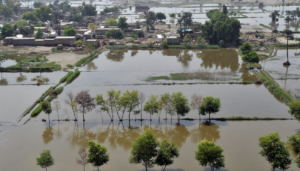
In a damning reflection of its chronic instability, Pakistan has been ranked 222nd out of 226 nations in the newly released Global Investment Risk and Resilience Index by Henley & Partners.
The placement, near the absolute bottom of the table, underscores the country’s enduring inability to escape the vortex of political turmoil, economic fragility, and institutional decay.
Positioned just above South Sudan, Lebanon, Haiti, and Sudan, Pakistan’s ranking signals not merely a statistical failure but a profound indictment of the structural dysfunctions that continue to undermine its viability as an investment destination.
Developed in collaboration with the AI analytics firm AlphaGeo, the index assesses nations across multiple dimensions — from exposure to geopolitical and economic risks to climate vulnerabilities and adaptive capacities.
Pakistan’s dismal performance is attributed to a confluence of factors: weak governance, persistent political instability, and frail legal and regulatory systems.
The report paints a stark picture of a nation struggling to manage risks, let alone build resilience. It reveals a state where crisis is not a disruption but the default condition of governance.
For investors, the message could not be clearer. Pakistan has become synonymous with unpredictability — a volatile environment where laws shift with political winds, economic planning is hostage to short-term fixes, and public institutions are often paralysed by inefficiency or outright dysfunction.
The cumulative effect is a climate of chronic uncertainty that no bailout, however large, can disguise.
Even as Pakistan’s foreign exchange reserves have risen to $14.44 billion as of October 2025 — buoyed by an IMF programme worth $7 billion, bilateral aid, and remittance inflows — these figures represent temporary relief rather than systemic recovery.
The country’s problems, as the index highlights, are structural rather than cyclical. Political instability remains the most corrosive factor, eroding both domestic and international confidence.
Over the past decade, Pakistan’s leadership crises — from parliamentary upheavals and judicial interventions to the military’s continued influence over civilian politics — have created a governance environment defined by fragmentation.
No government, civilian or otherwise, has been able to sustain a coherent economic vision long enough to inspire credibility. The result is a perpetual cycle of policy reversals, interrupted reforms, and fiscal dependence on external actors.
At the heart of this instability lies Pakistan’s fragile political contract — a system in which competing power centres frequently neutralise one another, leaving state institutions weakened and incoherent.
Every attempt at reform, whether in taxation, energy, or trade, is met with resistance from entrenched interests.
Governance itself has become an arena of survival rather than service, and the economy its most visible casualty.
It is no surprise, then, that the Henley & Partners index identifies “significant legal and regulatory risks” as defining features of Pakistan’s high-risk profile.
The legal system, often opaque and politicised, offers little assurance to investors seeking protection under predictable frameworks.
Contract enforcement remains painfully slow; bureaucratic hurdles deter both foreign and domestic entrepreneurship; and corruption, long institutionalised, corrodes trust at every level of transaction.
The absence of a consistent rule of law has hollowed out the state’s credibility — both at home and abroad — and left Pakistan incapable of responding effectively to shocks, whether economic, environmental, or political.
Compounding these governance failures is Pakistan’s low economic complexity — a reflection of its overreliance on a narrow set of exports, primarily textiles and agricultural goods, with minimal value addition.
The country’s inability to diversify its industrial and technological base has left it vulnerable to external fluctuations.
As global supply chains evolve and innovation becomes the key currency of competitiveness, Pakistan remains tethered to outdated modes of production.
Its innovation capacity is described as “limited” in the index — a polite euphemism for a state that invests little in research, education, or technology infrastructure.
Social development indicators mirror this stagnation. Widespread poverty, a shrinking middle class, and growing inequality have compounded the sense of economic despair.
Pakistan’s human capital — once seen as a potential engine for growth — is now undermined by poor education outcomes, brain drain, and weak labour productivity.
The result is a society that finds itself increasingly disconnected from the global economic mainstream, unable to attract investment or retain talent.
Geopolitically, Pakistan’s vulnerabilities are equally pronounced. Its tense relations with India, the deteriorating situation in Afghanistan, and the uncertain dynamics of its ties with major allies like the United States and China expose the country to constant external risk.
While Pakistan continues to tout its strategic location as an asset, it has increasingly become a liability.
The very geography that once promised connectivity and trade now serves as a corridor for instability — from militant infiltration to cross-border economic disruptions.
The Global Investment Risk and Resilience Index also factors in climate exposure, a domain where Pakistan ranks among the most endangered nations.
The catastrophic floods of 2022 and recurrent droughts since have exposed the country’s environmental fragility. Yet adaptation measures remain grossly inadequate.
The state’s limited capacity to plan, invest, and implement climate-resilient infrastructure only amplifies the risk landscape.
For investors, the threat is not just financial but existential — the unpredictability of nature compounded by the unpredictability of governance.
Despite periodic infusions of foreign aid and IMF-backed programmes, Pakistan’s fiscal foundation remains precarious.
The reliance on short-term borrowing, coupled with mounting debt-servicing obligations, has created an economy perpetually on the brink. Every round of external financing delays, but does not prevent, the next crisis.
In such a scenario, resilience — the ability to recover from shocks — is virtually non-existent. The country operates in a state of managed decline, where survival rather than growth defines the economic narrative.
Perhaps the most damning aspect of Pakistan’s ranking is not its position itself, but the consistency with which it remains trapped in the same narrative.
Over the past two decades, multiple global indices — from the World Bank’s Ease of Doing Business report to Transparency International’s Corruption Perceptions Index — have repeatedly placed Pakistan near the bottom.
Yet, the pattern persists. Governance remains transactional, reform superficial, and leadership preoccupied with short-term survival. The state oscillates between crisis management and political confrontation, leaving no room for long-term strategy.
The symbolism of Pakistan’s 222nd ranking is thus more than statistical. It reflects a crisis of confidence — both within and outside the country.
Foreign investors view Pakistan less as an opportunity and more as a risk to be managed, while its own citizens have grown accustomed to uncertainty as a way of life.
The erosion of trust in public institutions has turned cynicism into the national mood, where even incremental progress is greeted with scepticism rather than hope.
As global capital continues to migrate toward stable, transparent, and innovation-driven economies, Pakistan risks being permanently sidelined. The index’s findings confirm what many observers have long feared: that Pakistan’s decline is not accidental but systemic, rooted in decades of mismanagement and misplaced priorities.

